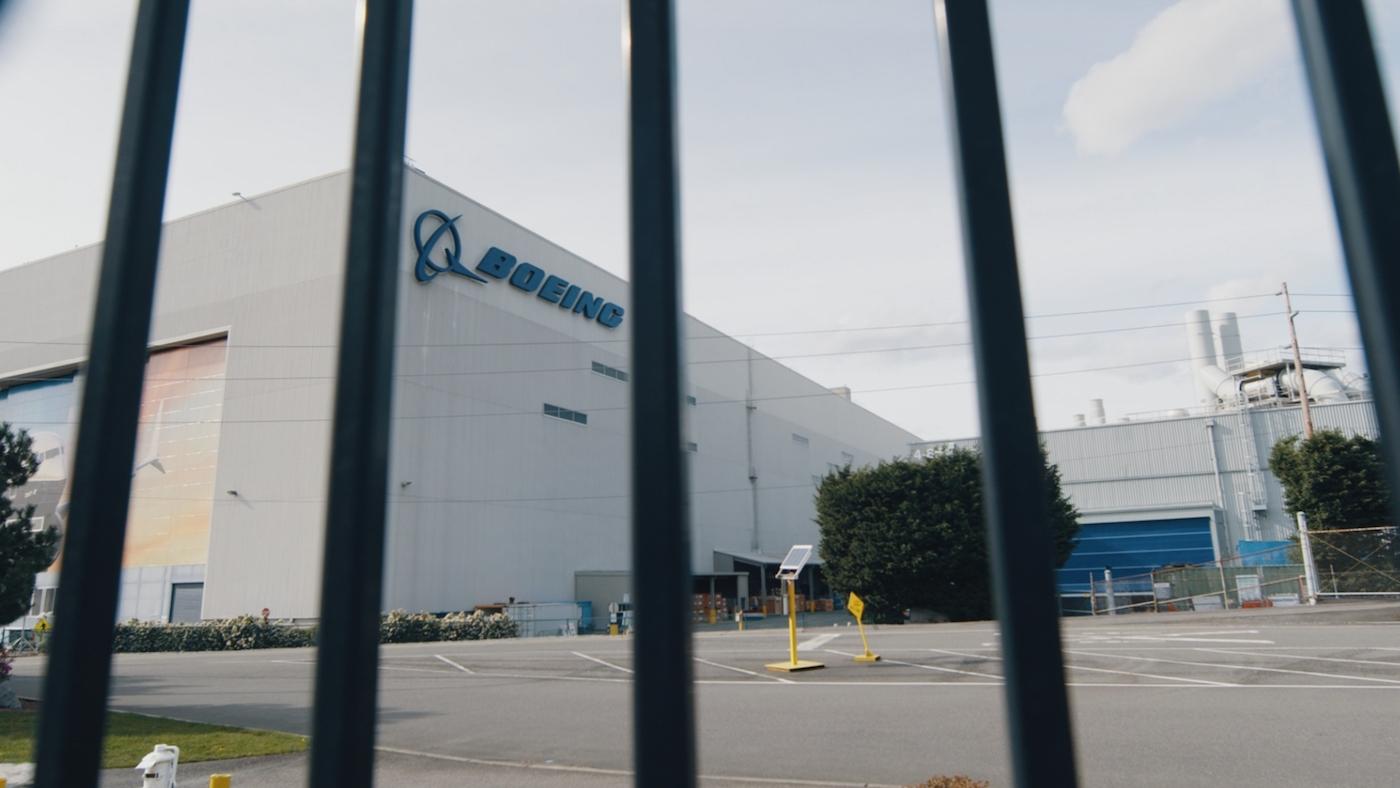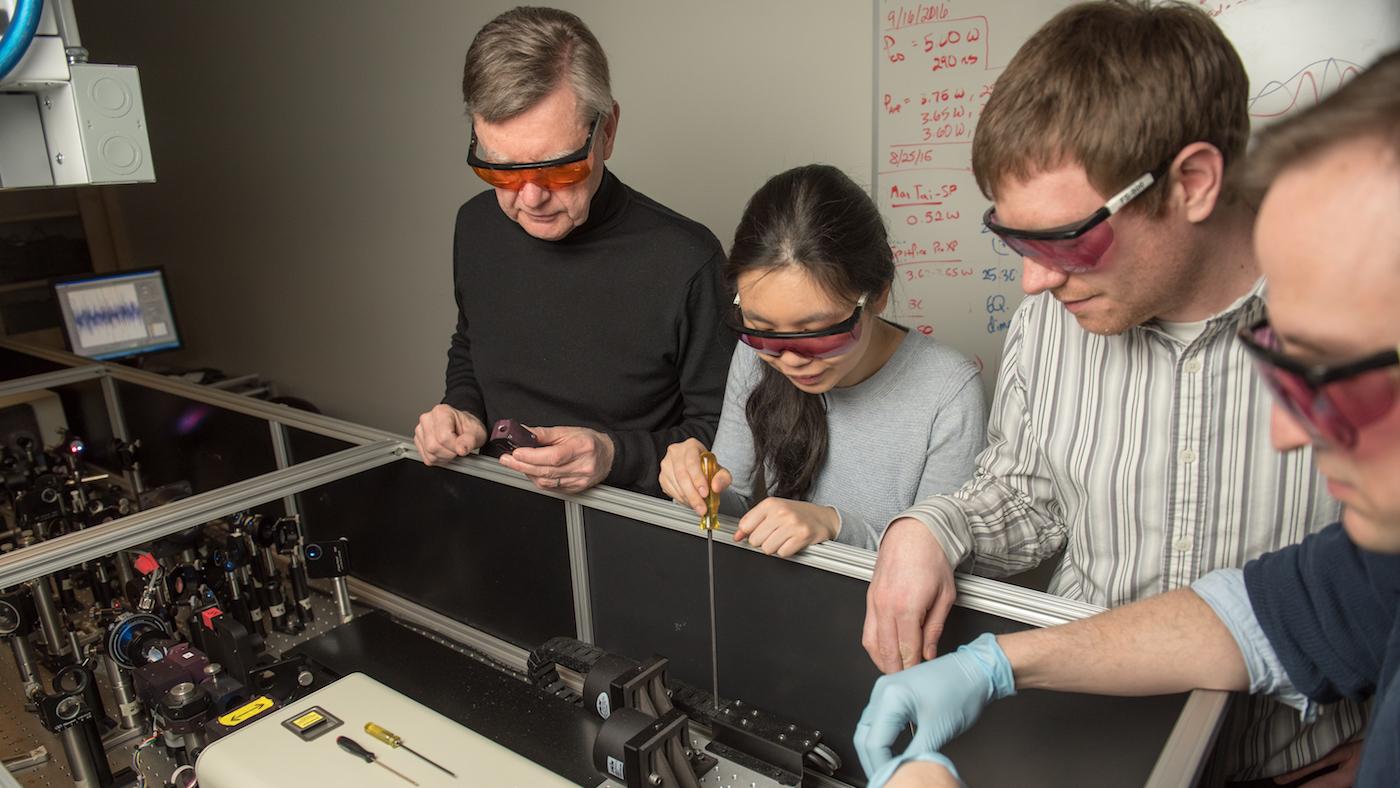The 'Wild Weather' of 'Science Storms'
Daniel Hautzinger
April 26, 2017
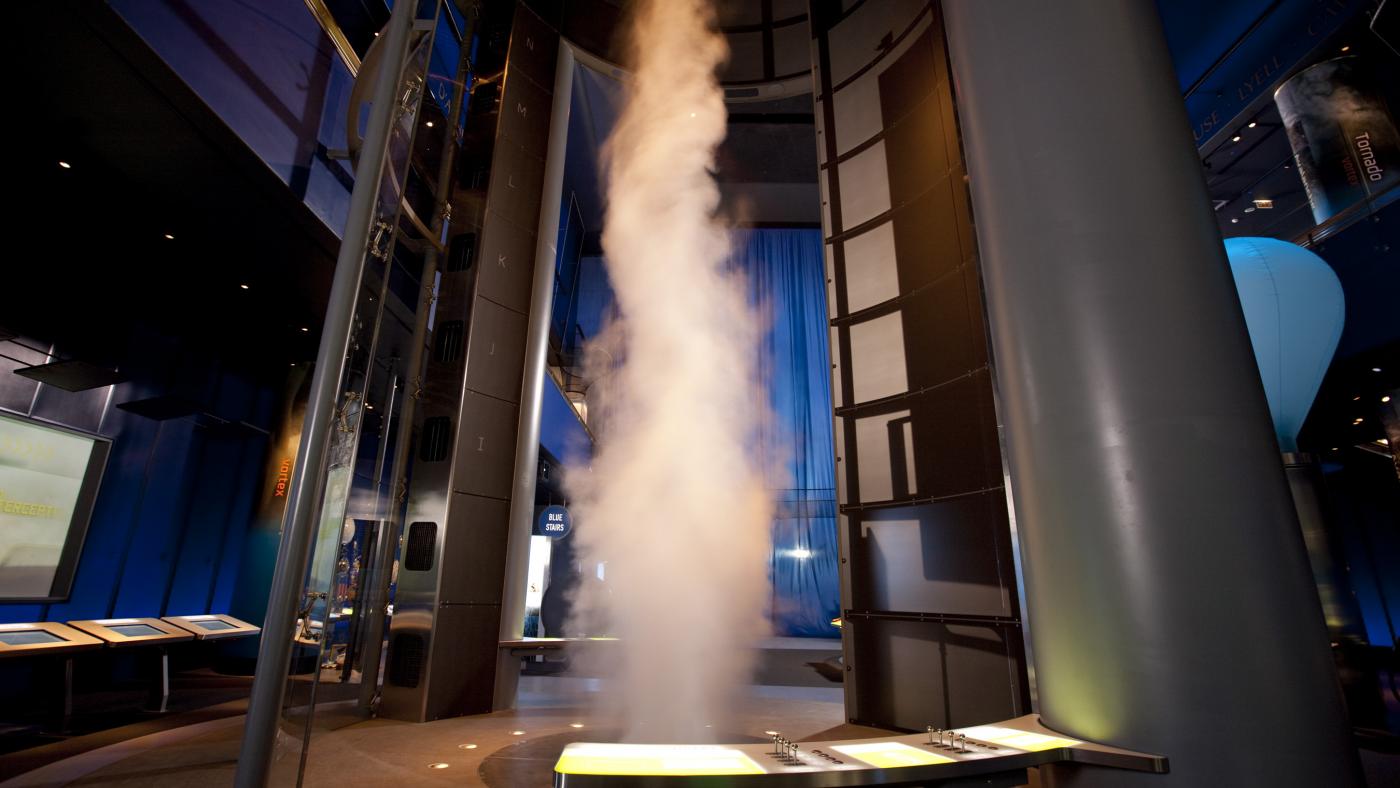
On Wednesday, April 26 at 10:00 pm, Wild Weather explores the powerful forces that drive weather, including tornadoes, avalanches, and fire whirls.
“Not everyone has a four-story indoor tornado or a twenty-foot diameter avalanche disk. You can’t just buy that from a catalog,” says Olivia Castellini, a senior exhibit developer at Chicago’s Museum of Science and Industry. She’s speaking about “Science Storms,” a 26,000 square-foot permanent exhibit at the Museum that aims to teach basic physics and chemistry through explorations of natural phenomena like lightning, tsunamis, and yes, tornadoes and avalanches.
“The idea is that science is inspired by a sense of awe at nature,” Castellini explains. “It’s a very human thing to look at something like a rainbow and then go, ‘Oh my gosh, that’s amazing! How does that work?’ So natural phenomena are a great entry point into physics and chemistry. Science is just this natural human tendency to want to try and explain the world around us.”
“Science Storms” examines seven elemental phenomena, with each focusing on different topic areas such as forces and motion (avalanche), gas laws and thermodynamics (tornado), and combustion (fire). It draws people into each area with both smaller hands-on experiments and large-scale interactive installations: a wave tank in which you can explore the effect of different variables on a tsunami, a massive tesla coil demonstrating electricity and magnetism, a live fire that can be controlled by water sprinklers and gas flow.
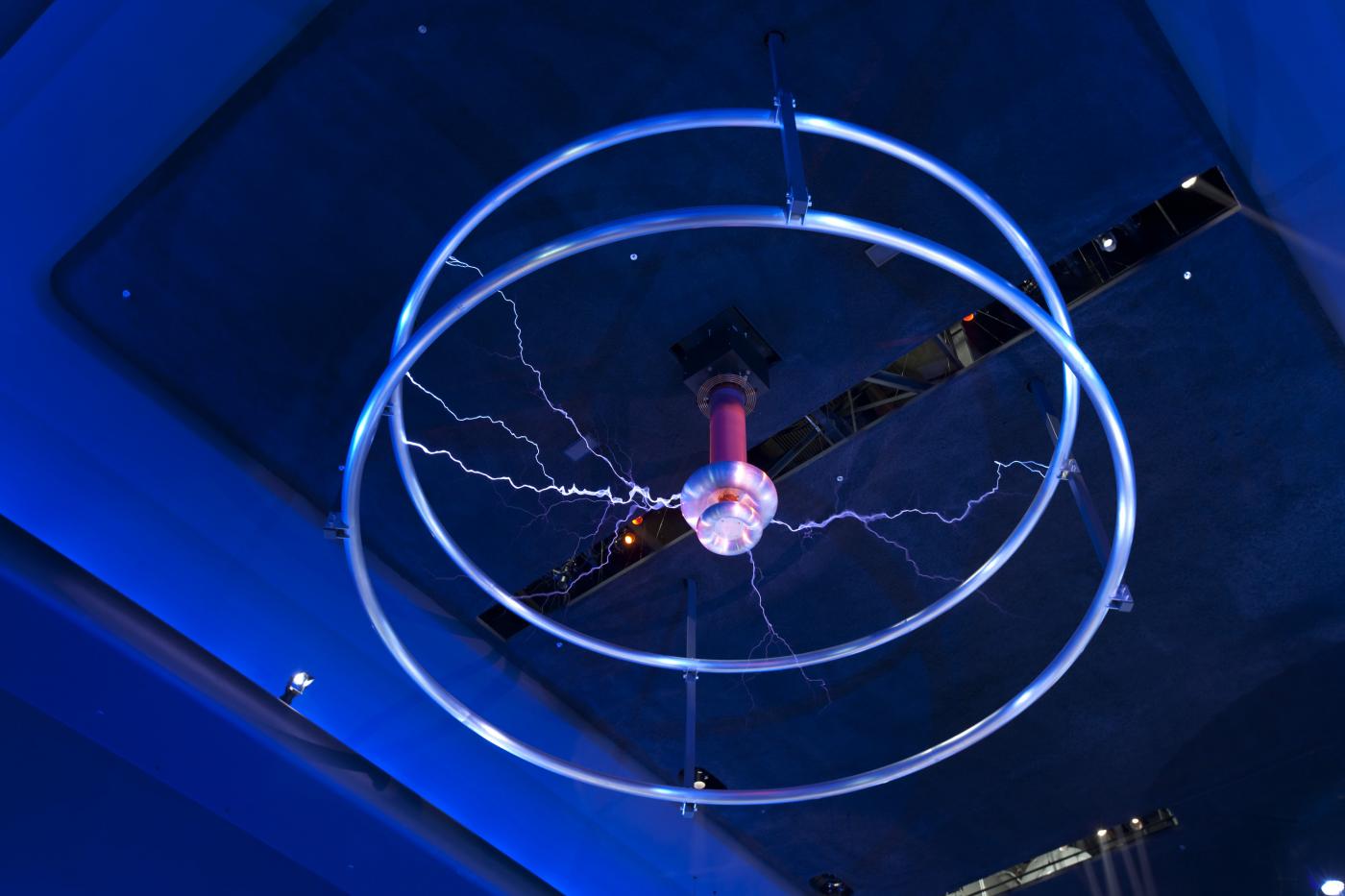 "Science Storms" has a massive Tesla coil that demonstrates electricity and magnetism. Photo: J.B. Spector/Museum of Science and Industry, Chicago“The exhibit is intentionally dramatic because we wanted people to have a sense of wonder when they see these things, because that’s very much how the scientists feel,” explains Castellini. Scientific experts in myriad fields contributed to “Science Storms,” and researchers working within the varied areas explored in the exhibit are profiled in videos and graphics. “It was really important for us to find these experts and tell their stories, to talk about the questions they are asking and hear what they get excited about.”
"Science Storms" has a massive Tesla coil that demonstrates electricity and magnetism. Photo: J.B. Spector/Museum of Science and Industry, Chicago“The exhibit is intentionally dramatic because we wanted people to have a sense of wonder when they see these things, because that’s very much how the scientists feel,” explains Castellini. Scientific experts in myriad fields contributed to “Science Storms,” and researchers working within the varied areas explored in the exhibit are profiled in videos and graphics. “It was really important for us to find these experts and tell their stories, to talk about the questions they are asking and hear what they get excited about.”
Showing that excitement helps interest the casual museum-goer who perhaps doesn’t realize what sorts of groundbreaking research are going on today. “We wanted to show that science is for everybody, that it’s still going on and there are lots of cool things out there to still discover,” says Castellini.
But the biggest hooks are the massive experiments demonstrating the power of nature.
“The fun part of my job is conceiving and developing the large-scale parts of the exhibit,” says Castellini. “We worked with everyone from engineers to theater people to artists. My job is to be sort of a hub between the artists, the engineers, and the researchers themselves, to oversee the back-forth between the engineering realities, the science realities, and the design.”
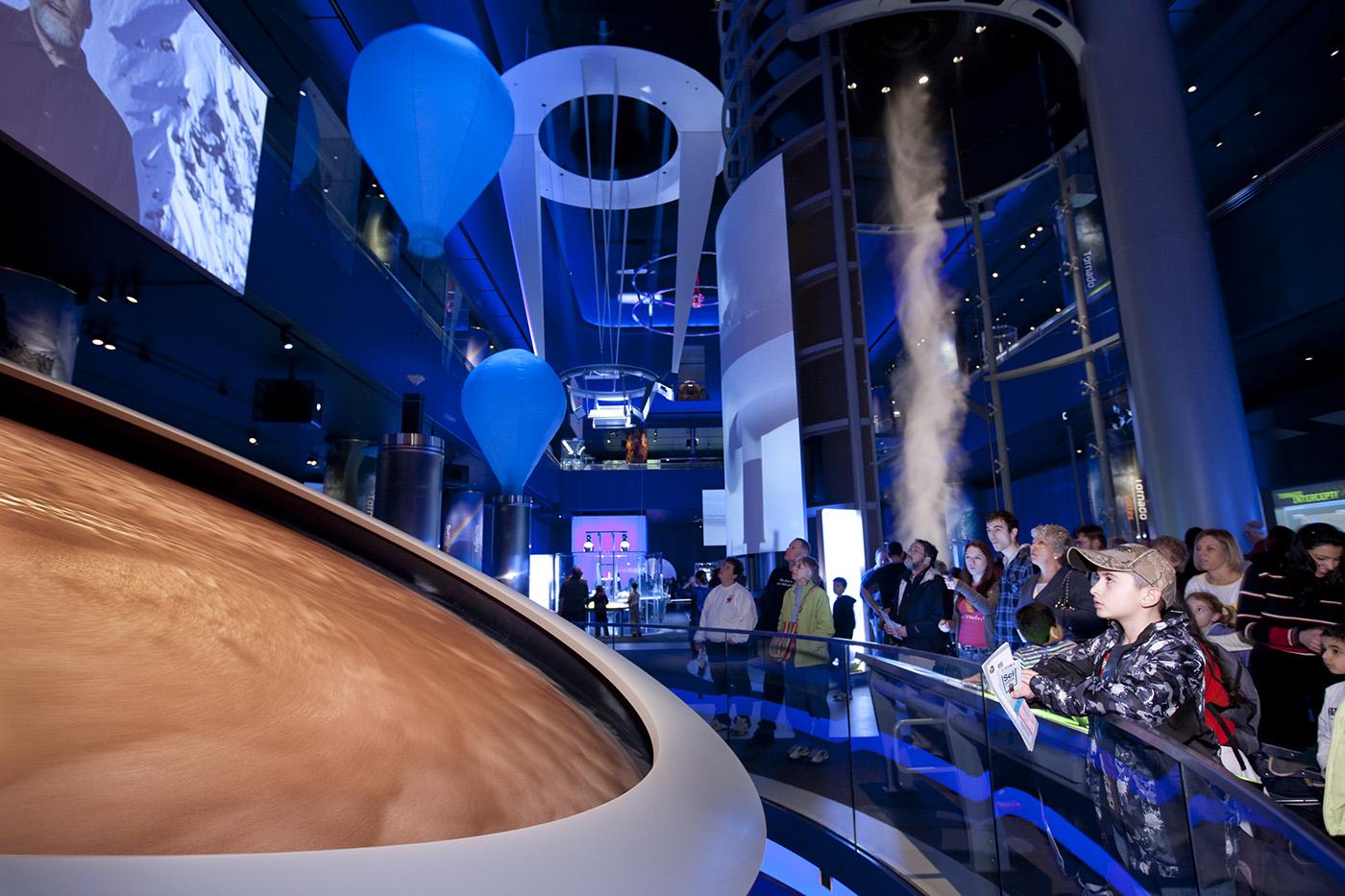 Large-scale interactive aspects of the exhibit include an avalanche disk that allows you to explore forces like gravity. Photo: J.B. Spector/Museum of Science and Industry, ChicagoThat includes learning about the researchers’ work and sometimes even seeing it in action. “I did go tornado chasing for three days,” Castellini recalls. “That was an experience. That’s really the closest I ever need to be a tornado. We blew up a car at an explosives camp in New Mexico – that was one of the best field trips.”
Large-scale interactive aspects of the exhibit include an avalanche disk that allows you to explore forces like gravity. Photo: J.B. Spector/Museum of Science and Industry, ChicagoThat includes learning about the researchers’ work and sometimes even seeing it in action. “I did go tornado chasing for three days,” Castellini recalls. “That was an experience. That’s really the closest I ever need to be a tornado. We blew up a car at an explosives camp in New Mexico – that was one of the best field trips.”
Castellini has a PhD in solid-state physics and focused in her own research on nanotechnology. “I’m endlessly fascinated by circuits and transistors,” she says. Her degree helps her understand the more technical aspects of ongoing research. The challenge is then to translate that into something that a general audience can comprehend.
“I think what ‘Science Storms’ can do is really underscore the importance of science in helping understand the world around us,” says Castellini. “While we don’t all need to be the person out chasing the tornado or measuring an avalanche, being scientifically literate and understanding how to take that information and have an informed discussion about the issues that surround it is important. An exhibit like ‘Science Storms’ can help people feel empowered to understand science and be a part of science.”




